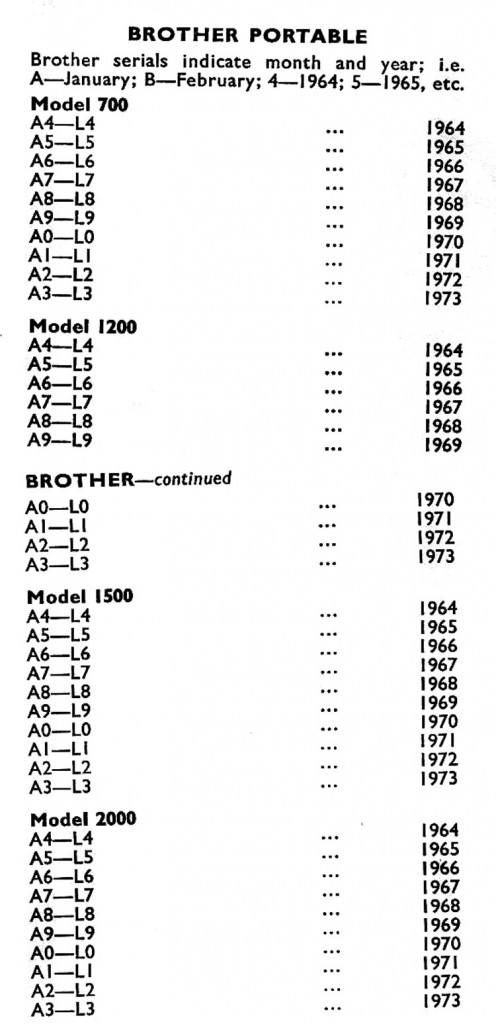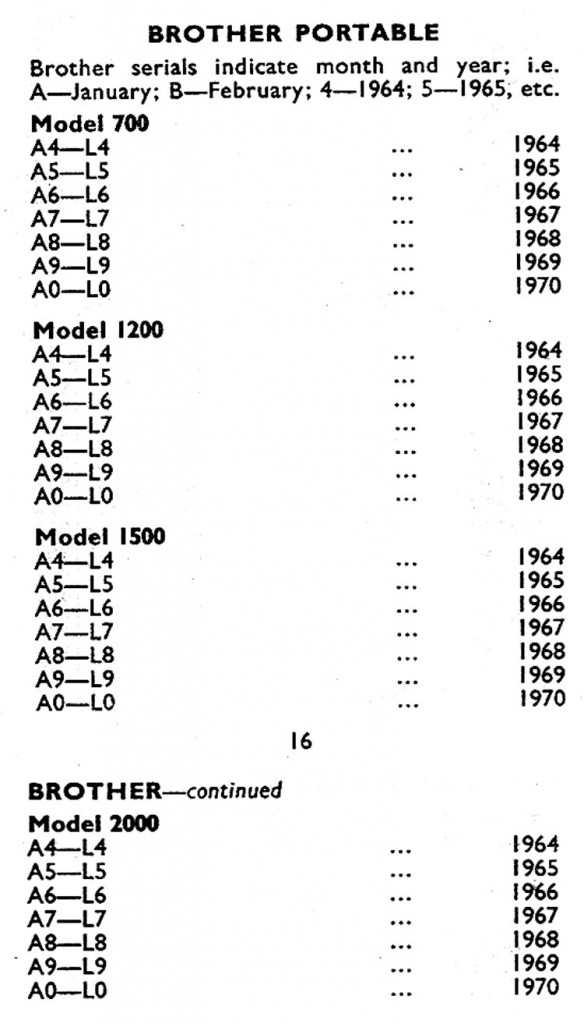With many thanks to Peter Brill in Australia and Rob Bowker in the UK, we have obtained copies of three known editions of the OMEF Typewriter Age Guide: October 1971, December 1973 and October 1980. A differently sourced copy of the 1973 edition is what was used as Source #6 by Dirk Schumann in compiling the original tw-db.com, so having the 1980 edition is going to be very valuable in updating the typewriterdatabase.com listing for many, many manufacturers. Having just paged through it in the hour since I got it in my mailbox is already showing very interesting new information. I think our hopes for Smith Corona and Olivetti will be very satisfied, just to mention two that I had hopes for.
I felt that OMEF 1980 would shed more light on BROTHER serial numbers as well, it seemed that Robert Messenger’s theory on interpreting Brother’s date codes might be easily proved correct by the later edition’s inclusion of years beyond 1973. It’s an elegant and sensical theory, and it *seems* to relate well to known examples – with TWO troubling exceptions:
Ryan Adney’s Brother Valiant SN: M2189054 and Peter Baker’s Wizard TrueType SN: P129541. Neither “M” nor “P” make sense as month codes, and the year codes don’t seem to make sense given certain design features.
Aside from those, and possibly other examples I don’t know about, the Messenger Theory could have been proven simply by OMEF 80 showing the year code of “1” for serial numbers beyond 1973. Or, for that matter showing *anything* that indicated serial numbers beyond 1973. It would have been so simple.
Well, it ain’t. ):
So, what do you guys think? OMEF 1980 seems to suggest that Brother didn’t actually use a decade code in their serial numbers. In fact, they seem to say that Brother serials did not really have any meaningful sequence other than the month and single year code, and even the month code is suspect given Ryan and Peter’s examples. I’m pretty confused now, and could use clarification. As far as I know, this data above is the total extent of the serial age information that *anyone* has on Brother from either factory or dealer federation sources. If anyone has some clarification, please shed some light on the issue (:



That is a conundrum. I wonder if our trouble is we all use english-language sources. I wonder if my niece would have any luck with Japanese searches.
Also I had no idea that Ryan’s was nearly identical to my own. Could that be a clue?
I hereby delegate to you the authority to use any agents in your employ to obtain information on Brother serial numbers in the Democratic Empire of Japan. Agents should use discretion and judgement generally recommended for such information gathering missions. Report when significant data is obtained. (:
The odd serial is an odd problem. The suggestion of looking for Japanese sources of information might be a fruitful avenue. Other than that we might be exceptio probat regulam in casibus non exceptis.
Not sure there’s headspace in this regime for exceptio probat… but it did cross my mind. Could it happen on a well-oiled production line…? Glad the OMEFs arrived safely!